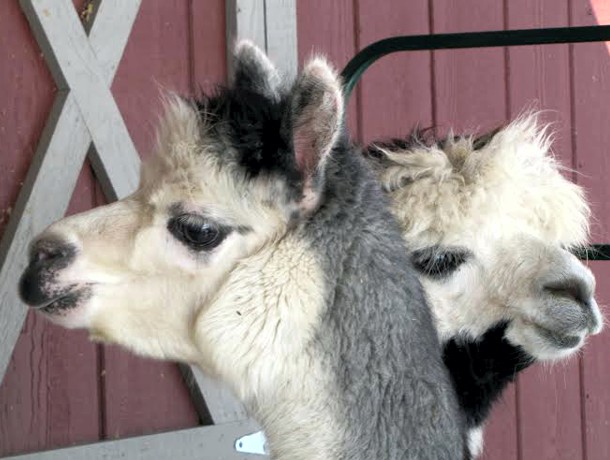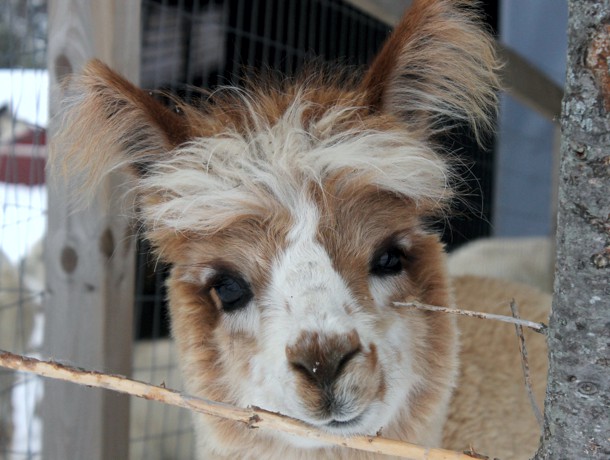History and the Future
The Canadian Llama and Alpaca Association first began registering alpacas in 1987. The initial animals enrolled in the registry consisted primarily of imports from the U.S and stock from local and international zoos and game farms. Animals were screened for health and conformance to approved standards before admittance into the registry.
Large numbers of alpacas were first imported into Canada from outside of North America, primarily from Peru and Chile, in 1992. These animals and further imports until the registry was officially closed on Dec 31, 2000 formed the basis for our current registry. Imported animals are identified on their Registration certificates as being foundation stock.
In 1989 the Canadian Llama and Alpaca Association was incorporated under the Animal Pedigree Act. The act, first passed by Canadian Parliament in 1900, was enacted to bring a degree of order and protection to the livestock industry and to bring standardisation and control regarding sale of breeding stock and how they were represented. The basis for having a federal act under which breed associations can operate is largely twofold. First, the keeping of accurate pedigree information on a national basis is considered critical to the improvement of animal breeds and livestock in general. Second, the establishment of consistent national standards for representation of an animal's genetic background increases the integrity of the information for domestic and foreign trade purposes and provides protection to the buyers of breeding stock.
The purposes of the Act are stated as follows:
- to promote breed improvement
- to protect persons who raise and purchase animals by providing for the establishment of animal pedigree associations that are authorised to register and identify animals that, in the opinion of the Minister of Agriculture of Canada, have significant value.
Only one breed association per breed is incorporated under the act and given authority to represent that specific breed. They have sole authority to represent a breed(s) and manage a public registry for the breed, to issue registration certificates, to establish breed standards and rules of eligibility for registration and define what is a purebred. The breed association in Canada responsible for these activities with regard to alpacas is the Canadian Llama and Alpaca Association.
The original foundation stock animals were defined by a physical description that established a minimum requirement or range for specific characteristics of the breed, in other words, a breed standard. Following the closure of the registry, all further registered animals must show a relationship to the foundation population. These animals are identified on their registration certificate as purebred. No animal may be declared purebred if it does not carry at least 7/8ths relationship back to the original foundation stock or to other registered purebreds of that breed.
By defining the foundation population by a breed standard, and ensuring that all further registered animals meet that breed standard, and can be traced back to the original foundation stock, the alpaca registry is giving greater assurance that the progeny will exhibit the expected standard characteristics of the breed.
Further assurances are given by insisting each alpaca is permanently identified and is breeder-certified free of congenital disqualifiers before being registered. However, the cornerstone of the alpaca registry is parent verification. Each alpaca prior to registration is required to be parent verified, to sire and dam, through DNA profiling by a recognised laboratory.
The importance of the DNA typing is largely to assure that the reported pedigrees are accurate. Accurate knowledge of pedigree is essential for maintaining and improving the overall Canadian population of alpacas.
Canada has an active alpaca industry with many Canadians seeking improvements in their herds. While the registry is closed to further imports Canadians still have access to eligible animals born outside of Canada. Any alpaca, regardless of country of birth or date of birth, born of two CLAA registered parents that meet the Canadian rules of eligibility for registration, can apply for entry into the Canadian registry.
Canadians may also access foreign alpacas not eligible for registration through a breed-up program. The breeding-up program refers to the process of consecutively breeding animals towards a purebred status. Animals that are registered as purebreds can be bred to animals of unknown genetic origin. A first mating gives 50% purebred status, a second 75% and so on. The program allows Canadians to import alpacas from anywhere in the world (subject to CFIA requirements) and record them as grade (0%). For the purposes of this program 100% Purebred status is recorded at 15/16ths with each % purebred generation being bred to a 100% purebred Canadian registered animal.
The Canadian registration system is a strong and internationally respected system. It is the only one in the world whose integrity is overseen by an Act of Parliament. Although it is governed by strict rules, it is not without flexibility. Rules of eligibility for registration can be based perhaps not only on enforcing pedigree background but also on economically important performance traits that can then be used for genetic evaluation and selection.
The Canadian registry as defined by the Animal Pedigree Act recognises that the commercial market should be the ultimate beneficiary of a credible registry system and the Canadian livestock registration system has long been regarded as one of the most credible in the world.

In This Section
Translate Page:

